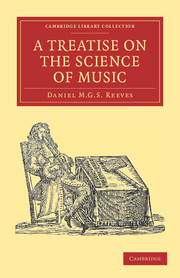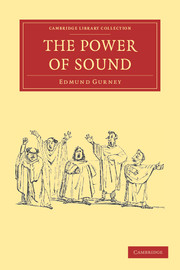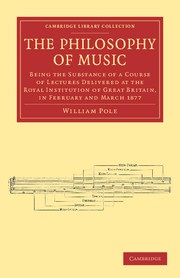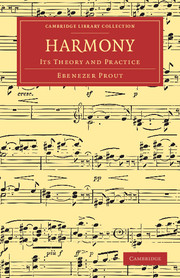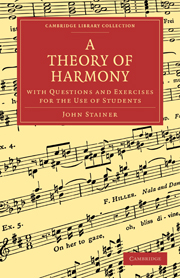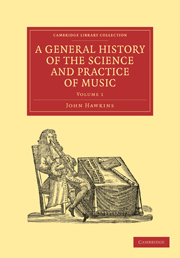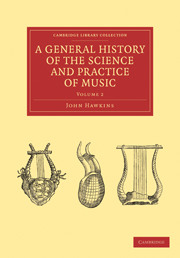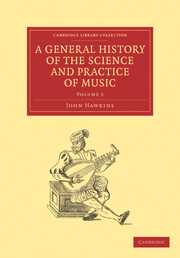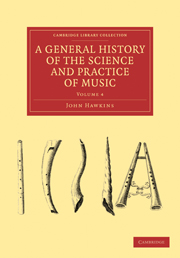The True Science of Music
Being a New Exposition of the Laws of Melody and Harmony
£37.99
Part of Cambridge Library Collection - Music
- Author: D. C. Hewitt
- Date Published: December 2011
- availability: Available
- format: Paperback
- isbn: 9781108038669
£
37.99
Paperback
Looking for an inspection copy?
This title is not currently available on inspection
-
The physics of music has fascinated scholars and scientists since ancient times, from Pythagoras' concept of celestial harmony, to the work of Galileo, Mersenne, Euler and Ohm, culminating in the nineteenth century in Helmholtz's definitive work, On the Sensations of Tone. Daniel Chandler Hewitt (1789–1869) was a piano maker who also devised improvements to the seraphine (a form of reed organ). This idiosyncratic work, first published in 1864, only a year after Helmholtz's German text (also reissued in this series in the 1875 English translation), discusses the mathematics of musical intervals according to Hewitt's 'Triune', or three-fold, system of calculation using his Musical Ratiometer (included at the end of the volume). Musical examples, gathered at the end of the work, illustrate his arguments and include a close analysis of the intervals and chord structures of the Moonlight and the Appassionata piano sonatas by Beethoven.
Customer reviews
Not yet reviewed
Be the first to review
Review was not posted due to profanity
×Product details
- Date Published: December 2011
- format: Paperback
- isbn: 9781108038669
- length: 514 pages
- dimensions: 244 x 170 x 26 mm
- weight: 0.81kg
- contains: 39 b/w illus.
- availability: Available
Table of Contents
Preface
Definition of terms
Introduction
1. Sound - notion - vibration - interval
2. Means by which intervals may be obtained and their effects produced, in agreement with their true ratios
3. Description of a series of experiments, and of the phenomena resulting therefrom
4. The unit sound, commonly called the grave harmonic, or generated third sound
5. Systems of sounds
6. On the analysis of chords per-se
7. Of the triune system in respect to chords - that is, harmonic combinations, whence proceed the first, second, and third mode
8. Of the method of finding the ratio of single notes and chords, which appertain to different triune systems - and which, nevertheless, are the same upon keyed instruments, and frequently, though not always, the same in respect to their notation
9. Of the second period of the development of the triune system, whence proceed the harmonics denominated fixed chromatics, and the combinations thence derived
10. Nature - art
11. Explanation of various matters preparatory to the introduction of the musical ratiometer
12. The musical ratiometer, and its connexion with the triune system
13. Analysis of musical phrases and passages extracted from the works of the most celebrated composers, in verification of the triune system, as being the exemplar of what is true and natural in music
14. Of the third period of the development of the triune system, whence proceed the harmonics denominated serial chromatics, and the combinations thence derived
15. Of the great system, or system of systems
16. Of harmonic, basal, and tonic transitions
17. Classification and explanation of principal and subordinate basal transitions
18. Rules relating to melody, harmony, and composition
19. On position. Why the triune system is referred to its central and not to its sub-basis. And on compound vibrations
20. Accent
21. Imitation, fugue, canon
22. Further remarks upon analysis and composition
23. Analysed examples, with strictures
24. Further remarks upon the chord of the diminished or extreme flat 7th. Very low and very high sounds. The number of vibrations in a second, according to the equal temperament. Change of key. A suppositious system of 5 bases. An ideal law of progression
25. New tables of logarithms, and their adaptation to musical purposes. Scale of 53 sounds in the octave. Conclusion
Music examples
Figures and diagrams
The musical ratiometer.-
General Resources
Find resources associated with this title
Type Name Unlocked * Format Size Showing of
This title is supported by one or more locked resources. Access to locked resources is granted exclusively by Cambridge University Press to lecturers whose faculty status has been verified. To gain access to locked resources, lecturers should sign in to or register for a Cambridge user account.
Please use locked resources responsibly and exercise your professional discretion when choosing how you share these materials with your students. Other lecturers may wish to use locked resources for assessment purposes and their usefulness is undermined when the source files (for example, solution manuals or test banks) are shared online or via social networks.
Supplementary resources are subject to copyright. Lecturers are permitted to view, print or download these resources for use in their teaching, but may not change them or use them for commercial gain.
If you are having problems accessing these resources please contact [email protected].
Sorry, this resource is locked
Please register or sign in to request access. If you are having problems accessing these resources please email [email protected]
Register Sign in» Proceed
You are now leaving the Cambridge University Press website. Your eBook purchase and download will be completed by our partner www.ebooks.com. Please see the permission section of the www.ebooks.com catalogue page for details of the print & copy limits on our eBooks.
Continue ×Are you sure you want to delete your account?
This cannot be undone.
Thank you for your feedback which will help us improve our service.
If you requested a response, we will make sure to get back to you shortly.
×

